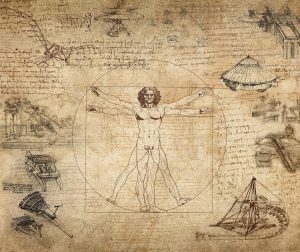10.1 On Creativity: An Introduction and Conclusion

Very soon, most fields of human endeavour will be shaped in varying degrees by different forms and adaptations of artificial intelligence. This will lead to profound transformations in human perception and thought, and of course, those transformations will affect Creativity and Innovation.
Let’s remember that creativity is the ability to produce original ideas or to create or design something original through the use of our imagination. Consider also that our imagination is a Cognitive Process that involves forming mental pictures, sensations, or concepts of things that are not perceived by our senses, but that allow us to create entirely new ideas, reimagine past ideas and experiences, and consider different alternatives to our current reality.
This flexible internal process has been essential for problem-solving, creativity, emotional well-being and for our ability to integrate new experiences into our existing knowledge without trauma.
When I was growing up in New York City, and to celebrate my seventh birthday, my father gave me a present that changed my young life: A quite imaginative, descriptive and well-illustrated book titled, The Answer Book: The power of asking the right Questions…the Power of looking for the best possible Answers.
Then, many years later, after working at an International Congress on Stress with Doctor Rosie Manickam, a research assistant of famed Canadian endocrinologist and scientist, Doctor Hans Selye, I received a lovely gift from her in the form of a copy of one of Doctor Selye’s most extraordinary books. Selye is considered the “Father” of the field of STRESS research in medicine, and the book is titled From Dream to Discovery; On Being a Scientist”, published in 1964.
In it, Selye addresses the idea that we should all do research. That we should all ask basic, essential questions about everything. That we should all possess the humility, the strength of character and the knowledge to address our own flaws and satisfy our thirst for truth, for dignity, and for the search for happiness.
In the introduction to this exciting journey through the mind of a scientist and the way it works, Dr. Selye writes that he has categorized the questions we should all formulate into six groups:
- Why
- Who
- What
- When
- Where
- How
The sixth is, of course, the most all-embracing category of problems. The one that includes general assumptions, possible rules, experimental designs, theories, and the logic, statistics and intuition that should go into the critical evaluation of results.
Although Artificial Intelligence operates on the basis of pattern recognition, data processing, and even the impression of what appears to be a creative output, it lacks the subtle shades of meaning and expression that create elegance, complexity, and that circumstantial and often unpredictable spark of human creativity that distinguishes our species.
This touch of undisguised humanity honours the evolution of the human lineage that began about 7 million years ago and led to the emergence of Homo Sapiens around 300,000 years ago. Our modern and more complex behavioural patterns have flowered into complex technologies and cultural patterns that pose new possibilities and several challenges to our very survival.
This chapter examines the crucial role of creativity in critical thinking—especially as we navigate a world where machines can “think,” but not truly imagine. They can delve into millions of bytes of information, yet they are unable to participate in the exclusive human experience of cognition.
Creativity is not merely the domain of artists or inventors; it is an intellectual force that fuels innovation, problem-solving, and adaptability. When paired with critical thinking, creativity becomes a strategic tool for questioning assumptions, generating novel solutions, and resisting intellectual complacency. In the age of AI, where algorithms can offer answers but not always insight, the human capacity for creative reasoning is more essential than ever.
This chapter invites you, dear reader, to examine how creativity enhances critical thinking, how AI challenges and complements this dynamic, and how individuals can cultivate these skills to remain agile, ethical, and visionary in a rapidly evolving, yet human landscape.
Let’s Watch: A Closing Video-prompt
Video: “4 tips for developing critical thinking skills | Steve Pearlman, Ph.D. | TEDxCapeMay” by TEDx Talks [17:38] is licensed under the Standard YouTube License.Transcript and closed captions available on YouTube.
Key areas to consider:
- Perceive your environment
- Sense danger vs. reward
- Decide between danger and reward
- Act on the decision

